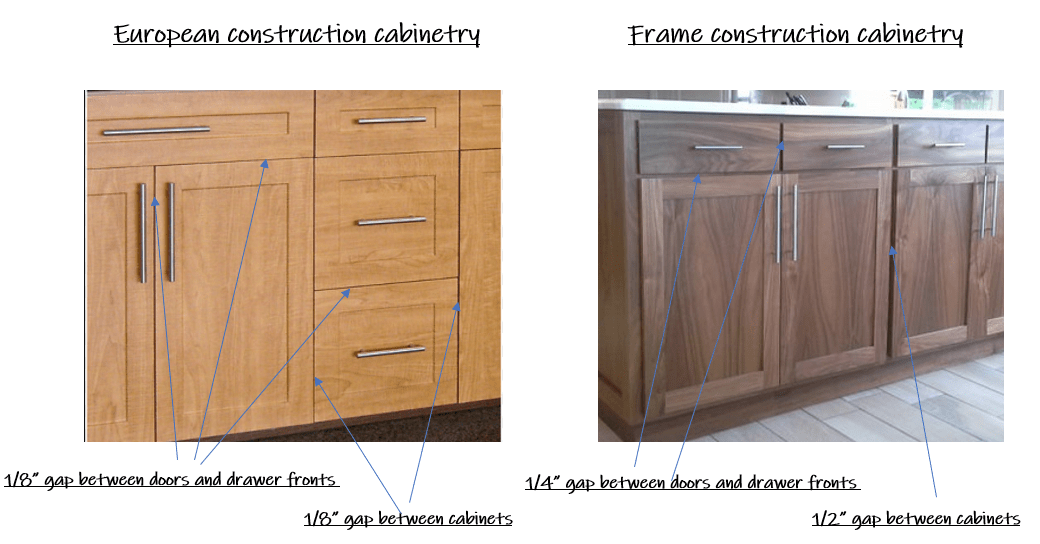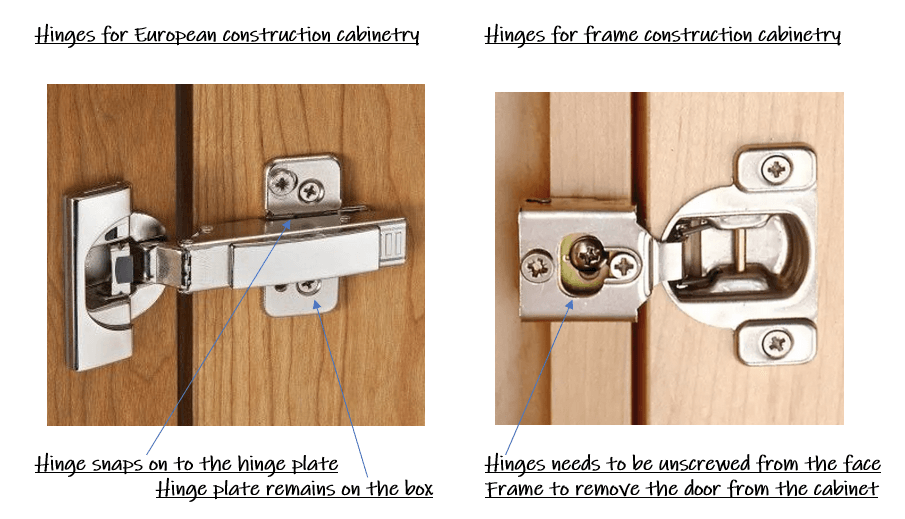European Frameless Cabinet Construction
EURO VS. FRAME
Who Wouldn't Like to Have Their Cake and Eat It, Too!
Despite the misconception in the consumer world, frameless, aka European, cabinetry construction offers just that. While it allows for maximum use of the wall space, and with an 1/8” of clearance between doors and drawer fronts, it creates a seamless, custom look that is aesthetically desired.
Frame construction, a trademark of American cabinetry manufacturing, has been the popular choice because of its marketing by the large cabinetry manufacturers of the industry. The abundance of hard woods and generous footprints of homes have prevented the industry and the end users from seeking alternative solutions.
Post WWII, advancements in manufacturing engineered woods such as medium density fiberboard, and plywood, increased the use of laminates, and with the rise of minimalist design in Europe the frameless, built-in concept for storage and furniture became popular. This concept made its way into kitchen design in Europe and was soon adopted in North America.
A typical frame construction cabinetry has a ¾” thick and 1 ½” wide, solid wood, face frame that is attached to the cabinet box opening. While this may add extra sturdiness to the carcass, it restricts the opening by reducing the width by at least 1 ½. Since the opening of a drawer box is reduced in a similar manner, the useable clear space inside each drawer is also reduced by 1 ½”. These may be insignificant unless the goal is to maximize the storage in a modest or a compact design.
As more and more homeowners prefer to tackle projects by themselves, cabinetry with a face frame can be easier for a novice do-it-yourselfer to handle without professional tools or expertise. Hoping that the product has kept its dimensional integrity, from manufacturing to arriving at the project site, it can be installed without having to do too much realignment or adjustment.
On the other hand, the installer typically removes the doors off the cabinet carcasses for easy handling and weight reduction during the installation. The hinges that are designed to work with frame cabinet would need to be unscrewed from the face frame. It is much easier to remove and reattach the doors on a frameless cabinet. The hinge style that works with a frameless cabinet box is composed of two parts; the hinge that is routed into the door and the hinge plate that is screwed to the inside wall of the cabinet box. The hinge designed to snap on to the hinge plate and it makes the removal and especially the reinstallation fast and practical.
In conclusion, finding the right product that fits within the expectations of all of the aspects of a project is challenging. Prioritizing the important elements makes the decision-making process less overwhelming. If the seamless, continuous look and full utilization of the space are on the top of the list when it comes to aesthetics and function, the choice would clearly be the European style, frameless, cabinetry construction in kitchen and bath industry.
WHO WE ARE. WHAT WE DO.
Traditional, Transitional, Modern, Classic, Contemporary, Rustic, Mission
ANY STYLE • NO LIMITATIONS
CONTACT INFORMATION
Executive Kitchens, Inc
32314 Woodward Avenue, Royal Oak, MI 48073a





